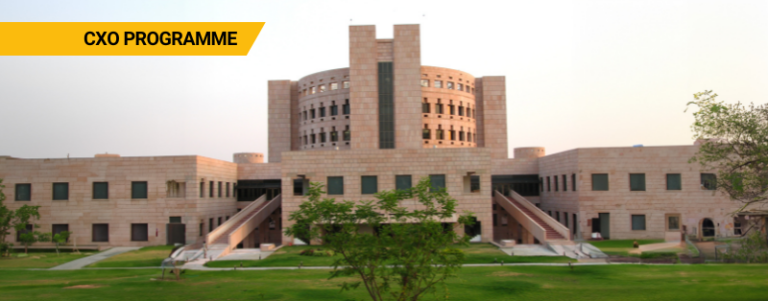The Top 25 CSS Interview Questions and Answers to Prepare for

As you gear for your next job interview, you must be well-prepared for the technical rounds, especially if you’re in the web development field. Consequently, Cascading Style Sheets interview questions (CSS interview questions) are a staple in assessing your front-end prowess. Moreover, these questions can range from the basics to more complex scenarios, tailored to gauge both beginners and experienced professionals. Therefore, let’s delve into some CSS basic interview questions and answers to help you stand out in your next interview.
In this blog, you will learn:
- Top 25 CSS Interview Questions With Answers to Prepare for Your Next Interview
-
- What is CSS, and How Does it Enhance HTML?
- Can You Explain the Box Model in CSS?
- What are Selectors in CSS, and How are They Used?
- How Do You Apply Multiple Stylesheets to a Single HTML Page?
- What is the Difference Between Class and ID Selectors?
- How Can CSS be Integrated Into an HTML File?
- What are Pseudo-Classes in CSS?
- Can You Describe the Z-Index and How it is Used?
- What are Media Queries, and Why are They Important?
- How Do You Make a Website Responsive Without Using Frameworks?
Top 25 CSS Interview Questions With Answers to Prepare for Your Next Interview
1. What is CSS, and How Does It Enhance HTML?
Cascading Style Sheets (CSS) is a powerful stylesheet language pivotal in web design. Specifically, it enhances HTML by providing a means to style the visual presentation of web pages. Moreover, it allows developers to separate content from design. This results in more flexible and maintainable code but also improves accessibility. Consequently, for HTML CSS interview questions, understanding the role of CSS in web development is absolutely essential.
2. Can You Explain the Box Model in CSS?
The CSS box model shapes how HTML elements are laid out. It has margins, borders, padding, and content. Moreover, each part affects element spacing and structure. Therefore, a solid understanding of the same is vital, especially for CSS basic interview questions. It’s the basis for exact, controlled layouts.
3. What are Selectors in CSS, and How are They Used?
Selectors in CSS are the tools through which you target HTML elements to apply styles. They range from simple tags to complex ID and class combinations. This versatility enables precise, dynamic styling—a key point in advanced CSS interview questions. Hence, a deep understanding of Selectors is indispensable for manipulating web page aesthetics effectively.
4. How Do You Apply Multiple Stylesheets to a Single HTML Page?
Interestingly, applying multiple stylesheets to a single HTML page is a common practice, especially in large-scale web development. As a matter of fact, you can link several CSS files in the head section. Alternatively, you can use the @import rule within a CSS file. This modular method doesn’t just portray efficiency, it also stands out among the CSS interview questions and answers. In summary, it proves your skill in managing and organizing styles at scale.
5. What is the Difference Between Class and ID Selectors?
Class Selectors, denoted by a period, are designed to be reusable and can be applied to multiple elements. Conversely, ID Selectors, indicated by a hash symbol, are intended to be unique within a page. This distinction is not just a frequent subject in CSS interview questions but also a fundamental principle for writing clean and efficient CSS.
ALSO READ: The Best 20 Java Interview Questions for Freshers You Should Know About
6. How Can CSS Be Integrated Into an HTML File?
CSS can be integrated into an HTML file in three primary ways—inline, internal, and external. Inline styles go directly into HTML elements. Internal styles sit within the HTML head section. External styles link from a separate CSS file. Each method has its use. Hence, knowing when to apply each of them is often asked in HTML CSS interview questions.
7. What are Pseudo-Classes in CSS?
Pseudo-classes in CSS are used to define the special states of elements. For instance, the :hover pseudo-class changes the style of an element when a user hovers over it with their mouse. Hence, this concept is not only intriguing but also a frequent topic in CSS basic interview questions due to its role in enhancing user interaction.
8. Can You Describe the Z-Index and How It is Used?
The z-index property in CSS is akin to layering in graphic design; it determines the stacking order of overlapping elements. Elements with a higher z-index are displayed on top of those with a lower one. Furthermore, this property is particularly relevant when it comes to CSS interview questions for experienced professionals Why? Because it requires a nuanced understanding of how elements are visually stacked on a page.
9. What are Media Queries and Why are They Important?
Media queries let web content adjust to different screens and resolutions. They form the responsive design’s core, essential for web developers. Often featured in CSS interview questions, they ensure web apps work well on all devices.
10. How Do You Make a Website Responsive Without Using Frameworks?
To make a site responsive without frameworks, use relative units, flexible grids, and media queries. These CSS tools let the layout adapt to any screen. This skill is key in CSS interview questions as it shows a developer’s knack for making adaptable, user-friendly sites.
ALSO READ: Learn Top 10 In-Demand Programming Languages of the Future
11. What is the Difference Between Padding and Margin?
Padding defines the space between content and an element’s border. Margin describes the space outside an element’s border. Both are key in CSS basic interview questions and crucial for web page layout and spacing.
12. How Would You Implement a Web Design That Requires Non-Standard Fonts?
For web designs needing unique fonts, you might use Google Fonts. Alternatively, apply the @font-face rule directly. Thus, this method ensures distinctive, uniform typography. Such topics frequently surface in CSS interview questions, especially for seasoned professionals eager to innovate in web design.
13. What is Flexbox, and How Does It Benefit Layout Design?
Flexbox, a CSS3 layout mode, efficiently lays out, aligns, and distributes space among items in a container, regardless of their unknown or dynamic sizes. Its numerous benefits make it a hot topic in CSS interview questions. This is because Flexbox significantly simplifies the creation of complex, flexible, and responsive layouts.
ALSO WATCH: Best Careers in IT
14. Can You Explain the Concept of CSS Preprocessors?
CSS preprocessors, such as Sass or LESS, extend the standard capabilities of CSS with features like variables, functions, and mixins. Furthermore, these tools facilitate more powerful and efficient stylesheet writing. This topic is becoming increasingly common in CSS interview questions for experienced professionals.
15. What are the Limitations of CSS That You Have Encountered?
Despite its robustness, CSS has its limitations, such as its challenges with vertical centering or maintaining aspect ratios. These limitations often lead to innovative solutions. They are a common discussion point in CSS interview questions as they test a developer’s problem-solving skills.
ALSO READ: An Expert’s Guide to Top 10 Programming Languages in India for 2024
16. How Do You Optimize CSS for Performance?
Optimizing CSS for performance involves minimizing file size, using shorthand properties, and avoiding complex selectors. These practices are essential for improving website load times. They are a key focus in CSS interview questions and answers, reflecting developers’ ability to create efficient and fast-loading web pages.
17. What are CSS Sprites, and How Do They Improve Web Performance?
CSS sprites combines multiple images into a single file to reduce HTTP requests and improve web performance. This technique is particularly beneficial for icons and buttons. It is a common topic in CSS interview questions as it demonstrates an understanding of efficient resource management.
18. Can You Describe the Difference Between “Resetting” and “Normalizing” CSS?
“Resetting” CSS involves stripping away default browser styling, while “normalizing” CSS aims to make built-in styles consistent across different browsers. Both methods are crucial for cross-browser compatibility, a frequent subject in CSS interview questions.
19. What is the Use of the “Important” Declaration in CSS?
The “important” declaration in CSS is a powerful tool that overrides other property values, but it should be used judiciously. Debates frequently arise over its use in CSS interview questions and answers, as it can potentially complicate the debugging process.
20. How Do You Handle Browser-Specific Styling Issues?
Handling browser-specific styling issues involves techniques like conditional comments, CSS hacks, or feature detection libraries such as Modernizr. This is a practical aspect of web development. It is also a common element in CSS interview questions as it helps address the reality of diverse browser behaviors.
ALSO READ: A Coding Language List for Every Type of Coder: What’s Your Pick?
21. What are the Advantages of Using CSS Grid?
CSS Grid is a layout system that provides precise control over columns and rows. It facilitates the creation of complex web layouts. Its numerous advantages make it a frequent topic in CSS interview questions as it represents a modern web design standard.
22. How Do You Use CSS Variables, and What are Their Benefits?
CSS variables, or custom properties, offer a way to store reusable values in a stylesheet. They simplify the maintenance and scalability of CSS. It’s a point of interest in CSS interview questions for experienced professionals due to their practicality in large-scale projects.
23. What Strategies Do You Use for Testing and Debugging CSS?
Testing and debugging CSS often involve using browser developer tools and validation services to identify and fix issues. Web developers must master these strategies as they commonly surface in CSS interview questions and answers.
24. How Would You Approach Creating a Print-Friendly Web Page With CSS?
Creating a print-friendly web page with CSS involves using a separate stylesheet for print or employing media queries to adjust styles for printing. This ensures that the printed version of the web page is legible and resource-efficient.
25. What are Some CSS Best Practices You Follow?
Some of the best practices in CSS include using semantic naming for classes and IDs, maintaining low specificity, and organizing stylesheets logically. Moreover, these practices are not only essential for maintainability but are also a common focus in CSS interview questions, reflecting a developer’s commitment to quality and standards.
ALSO READ: How to Get a Job in IT Sector as a Fresher
In conclusion, mastering these CSS interview questions can significantly enhance your confidence and performance in a technical interview. Whether you’re a beginner or an experienced professional, demonstrating your expertise in CSS is the key to acing interviews. Consider exploring these IT courses from Emeritus to deepen your understanding and keep you up-to-date with the latest web technologies.
Write to us at content@emeritus.org






